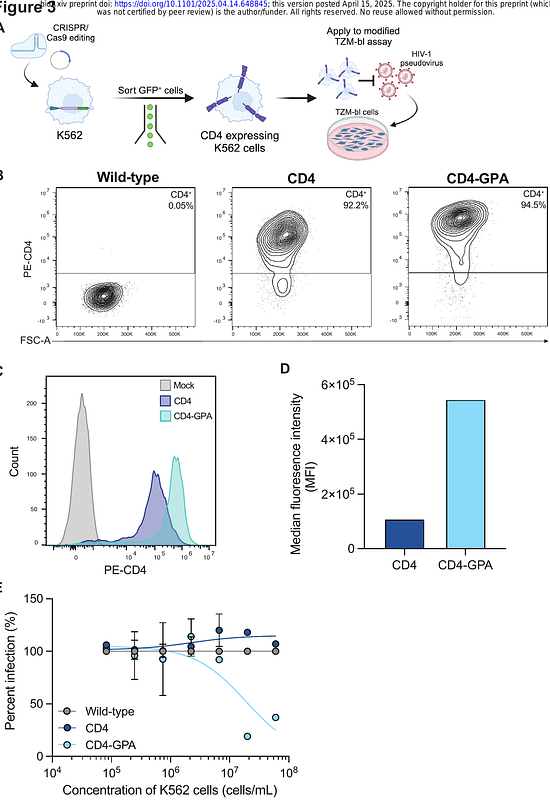Engineering hematopoietic stem and progenitor cells to generate red blood cells as viral traps against HIV-1

Engineering hematopoietic stem and progenitor cells to generate red blood cells as viral traps against HIV-1
Luna, S. E.; Feist, W. N.; Ben-Efraim, K.; Amorin, N. A.; Johnston, N. M.; Ghanim, H. Y.; Ekman, F. K.; Dudek, A. M.; Porteus, M. H.
AbstractCanonical HIV-1 entry into target cells depends on binding to CD4 as a primary receptor. Because of this, use of the CD4 receptor as a viral trap (a decoy receptor used to prevent infection of target cells) is a promising strategy for the treatment of HIV-1. One challenge in using CD4 viral traps is maintaining enough of the decoy receptor in circulation to remain effective. Here we present a strategy to produce cell-based CD4 viral traps by engineering hematopoietic stem and progenitor cells (HSPCs) to express the CD4 receptor in red blood cell (RBC) progeny. This takes advantage of the ability of the HSPC to repopulate the blood system for a lifetime, while leveraging the fact that RBCs greatly outnumber any cell targeted for infection. Engineered HSPCs efficiently express CD4 on their cell surface after differentiation to the RBC lineage in vitro. Fusion of CD4 to glycophorin A (GPA) and introduction of a truncated erythropoietin receptor (tEPOR) leads to increased CD4 expression and enrichment of edited cells (CD4-GPA-tEPOR) to levels capable of neutralizing HIV-1 pseudovirus in vitro. In sum, this work presents a potential strategy for the one-time delivery of CD4-RBC viral traps through autologous transplantation of engineered HSPCs.